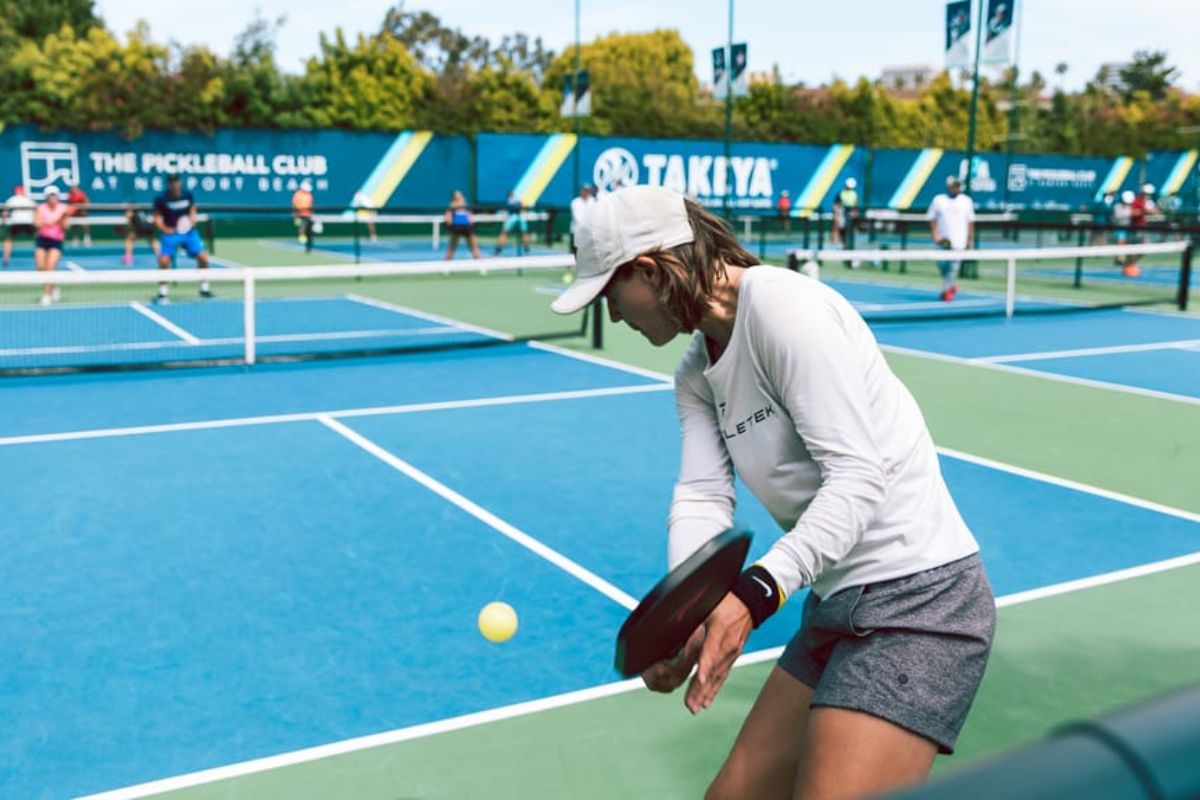10 Pickleball Strategies You Need: In a YouTube video titled “These 10 PICKLEBALL Strategies Will BEAT 98% of ALL Players,” expert tips are shared to help players improve their skills and dominate the court. The video offers strategies that cover various aspects of the game, from serving techniques to resetting with precision.
The strategies aim to make players smarter and more efficient. These tips can elevate your game and help you get ahead of your competition.
Key Strategy: Target Weak Spots
One of the strategies highlighted is targeting your opponent’s weaker spots, especially their backhand. When serving in pickleball, aim for the outside of a right-handed player’s left foot to force them into a backhand or an awkward forehand. This disrupts their footwork, slows their approach, and weakens their return. Adding side spin to your serve can make it even harder for your opponent to return effectively.
Mastering Shot Control
Controlling the peak of your shots is another critical strategy. When dinking or hitting third shots, it’s important to keep the ball low after crossing the net. By mastering shot control, players can make their returns more difficult and reduce errors.
Handling Backhand Slices
Tennis players often use strong backhand slices that stay low, making them tough to return. To counter this, players should stay low and keep the paddle slightly open. This allows for a controlled shot and even an aggressive return by applying topspin to the ball.
Targeting the Forehand Hip
When driving against an opponent at the net, the best target is often their forehand hip. Many players use a continental grip, which strengthens their backhand but weakens their forehand near the hip. Aiming at this spot forces weaker returns and provides opportunities for control.

Third Shot Drop Precision
When making third shot drops, aim for the middle of the kitchen or slightly toward the sideline. This strategy minimizes risk, reduces your opponent’s options, and ensures that your shots remain low and controlled.
Dink Strategy: Lift vs. Push
There are two types of dinks—lift and push. Lift dinks are soft shots used to clear the net, while push dinks are more aggressive and used to push your opponent back. The key is understanding when to use each type to neutralize your opponent’s shots or gain an advantage.
Using Dink Rallies to Create Openings
In a dink rally, targeting a player’s weaker forehand can force their partner to shift to cover, opening up other weaknesses. Consistently targeting a specific spot can make it easier to find openings elsewhere on the court.
Defense and Balance
Defensive positioning is critical. When defending against a shot, adjust your stance to prepare for the most dangerous threat but avoid overcommitting. This way, you’re ready for any surprise shots that come your way.

When to Step Back
In certain situations, stepping back is a smarter play. If your opponent hits a high dink or speeds up the ball, backing up gives you more time to reset and control the shot better.
Speedups with Precision
Instead of relying solely on power for speedup shots, players should aim for their opponent’s weak spots, like their forehand shoulder or left hip. Targeting these areas increases the chances of winning the point with well-placed shots rather than relying on raw power.
These strategies emphasize precision, smart placement, and adaptability. By practicing these tips and paying attention to your opponent’s tendencies, players can gain a significant edge on the court.
News in Brief: 10 Pickleball Strategies You Need
The YouTube video “These 10 PICKLEBALL Strategies Will BEAT 98% of ALL Players” shares expert tips to improve pickleball skills. Key strategies include targeting weak spots, mastering shot control, handling backhand slices, and executing third shot drops. The focus is on precision, adaptability, and exploiting opponents’ weaknesses, giving players a competitive edge on the court.
ALSO READ: Master these 4 Modern Pickleball Strategies to Dominate in 2025 and Beyond

